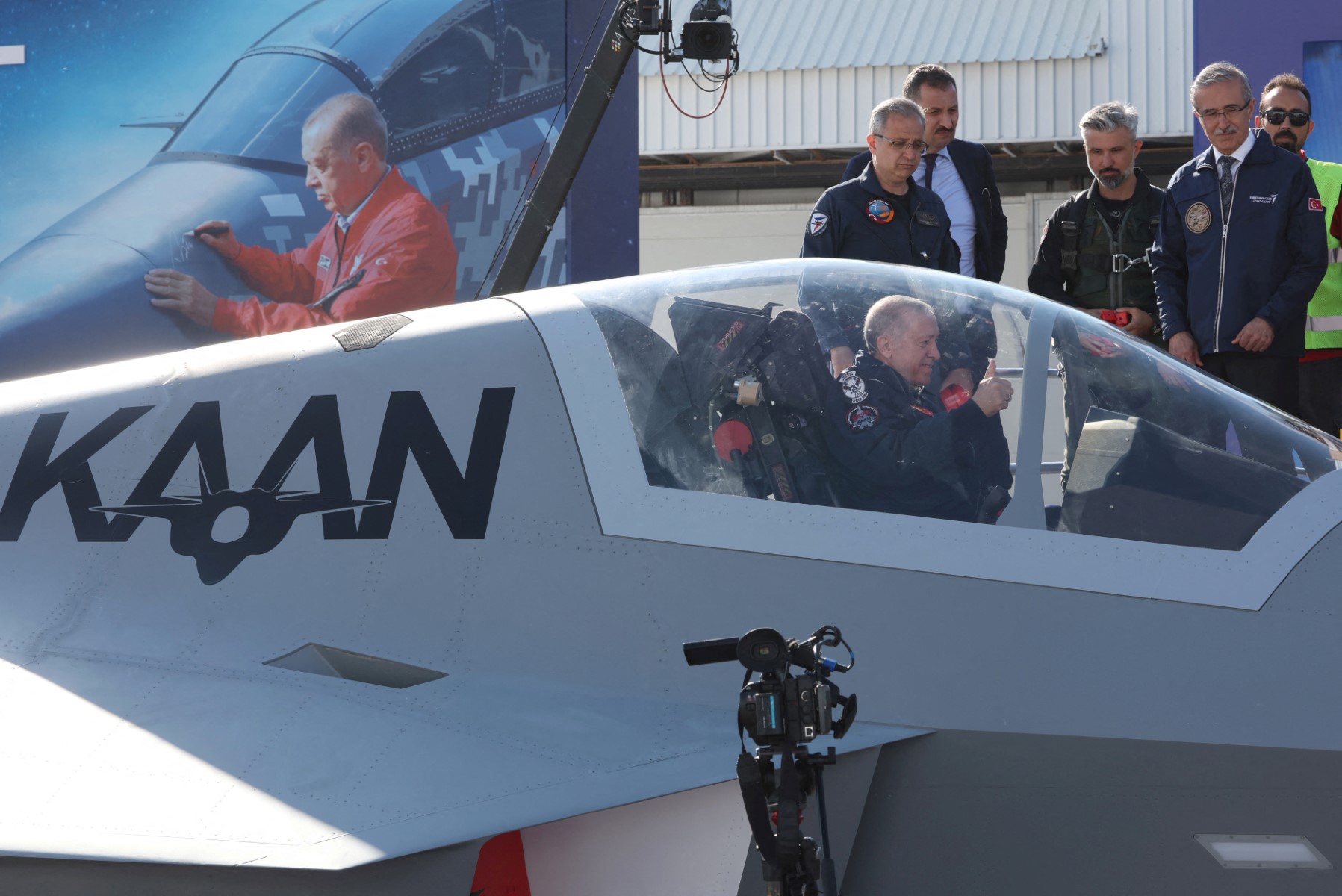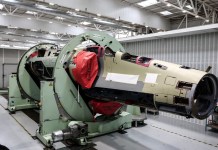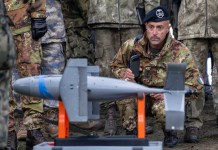OPED By Shay Gal
The Turkish KAAN has been marketed as the moment Ankara “joins the club” of fifth-generation air powers. For foreign buyers, it is something else entirely: a bet on an unfinished aircraft lashed to a politicized supply chain Ankara does not control. It is a multi-billion-dollar commitment whose most sensitive lifeline lies outside Turkey’s borders.
KAAN is real. It flew for the first time in February 2024, stayed aloft for roughly 15 minutes, and has since completed additional test flights, marking a genuine industrial achievement for Turkish Aerospace Industries.
The program aims to deliver around 20 “Block 10” aircraft to the Turkish Air Force around 2028–2029, with serial production envisioned for the 2030s.
On paper, KAAN gestures toward the fifth-generation domain dominated by the F-35 – an ambition more rhetorical than technological. For Ankara, however, the aircraft is the crown jewel of a defense sector whose exports have surged to record levels.
Strip away the public relations, and the core weakness becomes instantly apparent: propulsion. Every KAAN prototype and every early production aircraft relies on a U.S.-built General Electric F110. Under CAATSA sanctions, that engine requires an American export license. Without it, KAAN cannot be produced, delivered, or sustained.
The veto does not sit in Ankara; it sits in Washington.
Turkey’s critics did not expose this – its own foreign minister did. In late September 2025, journalist Amberin Zaman reported Hakan Fidan’s candid acknowledgment in New York that the F110 license “is stuck in Congress”, and that without Congressional approval, “production of the KAAN cannot begin”.
His remark triggered a political storm; officials scrambled to reinterpret his words, invoking “alternatives” and “multi-source planning”. None of it altered the basic engineering fact: without U.S.-licensed engines, KAAN’s first decade is at the mercy of external decisions.
Turkey is racing to break this dependence. TEI and TRMotor are developing the TF-35000, a domestic high-thrust turbofan intended for the early 2030s. Ground tests are planned mid-decade, with integration optimistically targeted for 2032.
But fighter engines do not mature on political timelines. They stabilize only after years of redesigns, thermal-cycle tests, compressor failures, and endurance runs. Even if Turkey achieves the improbable – compressing two decades of development into less than one – most export customers will still receive aircraft powered by engines governed by U.S. law.
For Indonesia, KAAN’s likely first buyer, this risk is immediate. Jakarta signed for 48 aircraft worth roughly $10 billion, expecting technology transfer, training, and future co-production. Most of those airframes will rely on U.S.-licensed F110s, meaning Washington – not Jakarta – will dictate maintenance cycles, upgrade paths, and operational availability.
The geopolitical risk is sharper still. Turkey’s relations with the United States and Europe rest on a tense mix of cooperation and confrontation: the S-400, northern Syria, Libya, Eastern Mediterranean disputes, NATO politics, and human-rights issues.
CAATSA sanctions remain in place. Under such conditions, any crisis – Cyprus tensions, a clash with Greece, escalation in Syria, a diplomatic break with Israel, or a shift in Washington – could freeze KAAN’s supply chain overnight, affecting not just Turkey but every foreign buyer tied to it.
Some argue that once a Turkish engine enters service, these vulnerabilities will disappear. This is wishful thinking.
KAAN’s airframe was designed with BAE Systems: European subsystems, mission software frameworks, materials, and test instrumentation run through the aircraft. Even with a Turkish engine, KAAN would still contain veto points scattered across the UK, the EU, and the United States.

The Bayraktar TB2 offers a smaller-scale precedent. Marketed as a symbol of Turkish autonomy, it relied on Rotax engines from Austria and WESCAM optics from Canada. When both were halted in 2020, TB2 production shuddered until domestic substitutes emerged. KAAN magnifies that truth dramatically: grounding a drone alters tactics; grounding a fighter fleet alters national strategy.
For countries like Indonesia, already juggling Rafale, KF-21, and F-15ID, KAAN introduces yet another ecosystem built on a foreign choke point.
It complicates force structure rather than consolidating it. Pakistan, Azerbaijan, Egypt, and Gulf states face their own political sensitivities: Chinese ties, Congressional scrutiny, Russian and Iranian proximity, Western export politics. KAAN risks binding this entire group to a single bottleneck outside Ankara’s reach.
Turkey’s own fleet plans reveal its caution. Ankara is acquiring Eurofighter Typhoons, negotiating for Qatari and Omani Typhoons, pushing for F-16 Block 70s, and still attempting, unsuccessfully, to rejoin the F-35 program. These hedges amount to an admission that KAAN will not shoulder Turkey’s air-power burden alone for at least a decade.
The parallel with Israel’s Lavi program is instructive. In the 1980s, Israel developed one of the most advanced multirole fighter programs outside the United States and the Soviet Union.
The Lavi was not cancelled because of a technical failure – it was a groundbreaking design that could have reshaped global fighter markets. It fell in 1987 under the combined weight of U.S. pressure, escalating costs, and divisive domestic politics.
The cabinet vote that ended the program passed by a single vote. Israel gained subsidized F-16s and F-15s, but relinquished the only opportunity it ever had to field a fully sovereign high-end fighter.
KAAN carries an unintended warning: Israel walked away from the Lavi once, but some projects never truly die; they simply slip beneath the surface until conditions change.
Whether that applies to the Lavi is not for me to assert. But anyone familiar with Israel’s engineering base understands why the question refuses to disappear – and why Ankara cannot afford to ignore it.
Turkey has absorbed that lesson – and that is why it will not abandon KAAN, regardless of cost or difficulty. Cancelling it would repeat Israel’s strategic surrender, something Ankara refuses to contemplate.
Yet ambition cannot overcome physics or time. Fifth-generation fighters require decades to mature. The United States took nearly twenty years to stabilize the F-35.
China still struggles with the reliability of its J-20 engine. Russia’s Su-57 remains limited in numbers and capability. Turkey is attempting to leapfrog multiple generations under sanctions, with foreign veto points embedded in the architecture.
Foreign buyers must ask one question: Who can stop my aircraft from flying? With KAAN today, the honest answer is: more actors than with almost any other fighter on the market.
Turkey will not cancel KAAN. Politically, symbolically, and industrially, it cannot. But foreign governments still have agency. They can invest billions in a fighter whose future depends on export licenses and political weather – or wait until it is powered by an engine and a supply chain answerable to no one but themselves.
Until then, KAAN remains what its title suggests: a jet built on permission, not power.
- Shay Gal is a strategic analyst and advisor on international security and geopolitical strategy, working with senior government and defense leaders worldwide. His work focuses on power competition, crisis management, and the intersection of diplomacy and military strategy. He previously served as Vice President for External Relations at Israel Aerospace Industries (IAI).
- VIEWS PERSONAL OF THE AUTHOR




